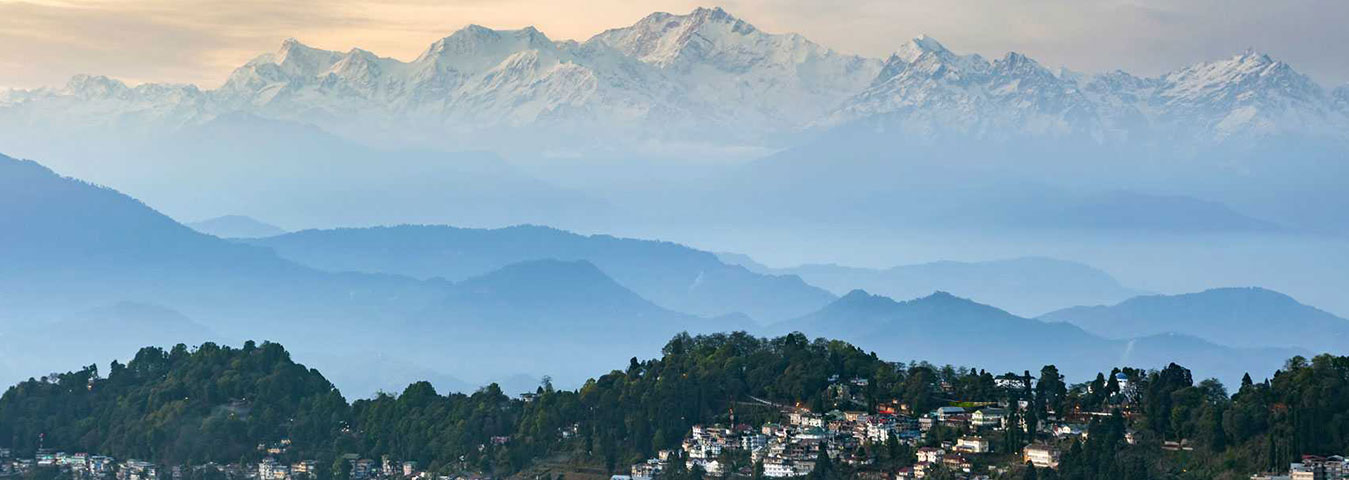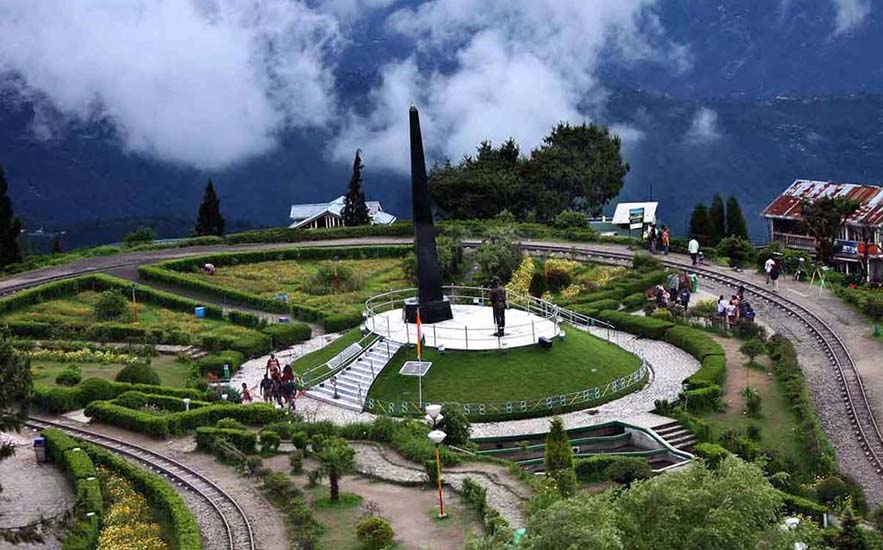The Darjeeling
Darjeeling is part of the state of West Bengal in India and located at the northern part of the state, in the Lesser Himalayas at an elevation of 6,700 ft (2,042.2 m). If you are looking for the coordinates (i.e. Latitude and Longitude) of Darjeeling, it is 27°3’N 88°16’E. The word ‘Dorji’ in Tibetan means ‘Thunderbolt’ and ‘Ling’ means ‘Place’. Therefore Darjeeling was so named to mean ‘The Place of The Thunderbolt’.
Darjeeling is one of the prettiest hill stations in India located in the northern part of West Bengal. With the majestic Kanchenjunga towering over it, Darjeeling is a beautiful hill station dating back to the times of the British Empire and is also known as the Queen of the Hills.
It’s all about magnificent views of snow-capped Kanchenjunga, torrents flowing down the mountain slopes, lovely tea gardens, landscapes with firs, pines & ferns, and all that combined with friendly people and modern yet colonial charm. The steep and bustling streets of Darjeeling are dotted with colonial-era buildings, Buddhist monasteries and Hindu temples which make it an interesting exploration for curious travellers. You can find about 4,000 different types of flowering plants in Darjeeling district including rhododendrons, orchids, magnolia etc, there are some 300 types of ferns including the rare fern trees.
Tea is the most famous produce of Darjeeling. Its vicinity is covered with lush emerald green tea plantations. These mist blown slopes yield the finest quality of teas which is referred to as the “Champagne of teas”. It’s an amazing story why the British had to look for an alternative place to grow quality tea and then chose Darjeeling as the place. Darjeeling tea has become a world-famous industry by itself. Know about its story, what are the different types of tea cultivated in Darjeeling, how it’s processed, the great tea estates and how can you tour them, best stores to buy Darjeeling tea and finally how to make a cup of such aromatic tea.
Though the tea gardens of Darjeeling are world famous. Tea tours is not a new concept in Darjeeling.
A refreshing sea of green on the developing hill-slopes. Harmony universally cracked only by the chirping of birds and gurgling of streams. The vibrantly clad tea workers gently plucking the famous two leaves and a bud, droning many merry tunes. And finally, royal comfort in fabulous Bungalows with a hot cuppa – finest blend of aromatic… its Tea all about!!
And if you care to go around the forested land, you can see some amazing animal life like red pandas, pangolins, yellow-throated martens, barking deer as well as leopards and even elephants in their natural habitats. And of course, if your vacation plan is to relax, enjoy food, do shopping and sightseeing, the friendly natives like the Nepalis, Tibetans and Lepchas will make you feel perfectly at home as you enjoy the fabulous weather and charm of the place.
Another interesting attraction in Darjeeling is “The Darjeeling Himalayan Railway” or DHR. Designated as a World Heritage Site by UNESCO, this train is remarkable as it was started in 1881 and continues to operate in the same manner as it did then. Most of its original features are still intact and anyone who sees it cannot but applaud it as an engineering marvel.
The Ghoom Railway station at a height of 7407 feet is the highest railway station in India. A Joy Ride on the toy train from Darjeeling to Ghoom, an hour-long ride, is something that any traveller to Darjeeling should not miss.
The people of Darjeeling are rich in folk culture. The hills are a treasure house of songs and dances of the simple folk. There is not a moment in their lives, possessed as they are of a lyrical mind and heart that does not turn into singing and dancing. The panorama of the majestic Himalayan mountains, its lush green hills and forests seem to have played a significant role in influencing the religion and culture including the folk songs and dances of the Gorkha people, inhabiting in and around the Himalayan regions.
How to reach Darjeeling
Many who come from outside West Bengal wonder if Darjeeling has an airport or a railway station by itself. While Darjeeling does have a small railway station for narrow gauge toy trains, those tiny mountain trains only operate between New Jalpaiguri (located at the plains) and Darjeeling town. Actually, New Jalpaiguri (also known as NJP in short) is the nearest major railway junction.
The nearest airport is at Bagdogra. So after you reach NJP or Bagdogra, there is still some 90kms uphill road distance to cover to reach Darjeeling. And it takes time to negotiate the steep hilly roads. From NJP or Bagdogra, it takes about 3 hours to reach Darjeeling town by car. Bus (from Siliguri) and shared taxis from NJP and Siliguri are also available. You can also take the toy train from NJP which moves at a snail’s pace and takes about 7 hours
One can have the view of entire Singalila Range along with Mt.Kanchandzonga, Bhutan Himalaya and a part of Everest range from Darjeeling. The eye caching valleys, meandering rivers and of course the lush green tea gardens are the unique features of Darjeeling. Besides all these the main attractions of this popular hill stations are Himalayan Mountaineering Institute (HMI), Himalayan Zoo, Tiger Hill, Rock Garden, Batashiya Loop.
Great Offbeat Places & Stays
Whatever may be your budget, it can be a great idea to combine your Darjeeling visit with one of such offbeat places to soak in nature and be in a state of tranquil bliss before returning to your routine life. It works as a great energizer for me. Most of such places that I have discovered over the years are only short distances away from Darjeeling town centre. They can be easily reached by car in 1 or 2 hours’ drive through scenic routes. You can also directly reach these places from Bagdogra airport or NJP railway station. Most of them are 2 to 3 hours’ drive from there.
Here are some of those great offbeat stays around Darjeeling. They include farmhouses, homestays, tea plantation retreats and such. They all offer great nature’s treat and some even the authentic aura of the British colonial time.










